Space
The intelligent code collaboration platform
Space and SpaceCode will be discontinued on June 1, 2025. Learn more → →
Teams – a Core Concept to Working and Communicating in Space
Teams are a key concept in Space. Teams represent the organization structure and how people work together. They can be flat and simple, or more complex hierarchies with multi-level teams.
Having teams eliminates the need for creating concepts such as groups and then making sure that every team member is also part of it. In many organizations, those groups are centered around distribution or access rights and don’t fully map to the organization structure.
In Space, teams and roles give us a convenient way to browse the organization by its real structure. A person can be a member of one or several teams and have a role that represents their title or specialty.
The Team Directory gives us an overview of all the teams, locations, and roles in our organization. We can drill down those concepts using various filters. If we’re searching for a certain person or someone with a certain role, the Team Directory can help us find them!
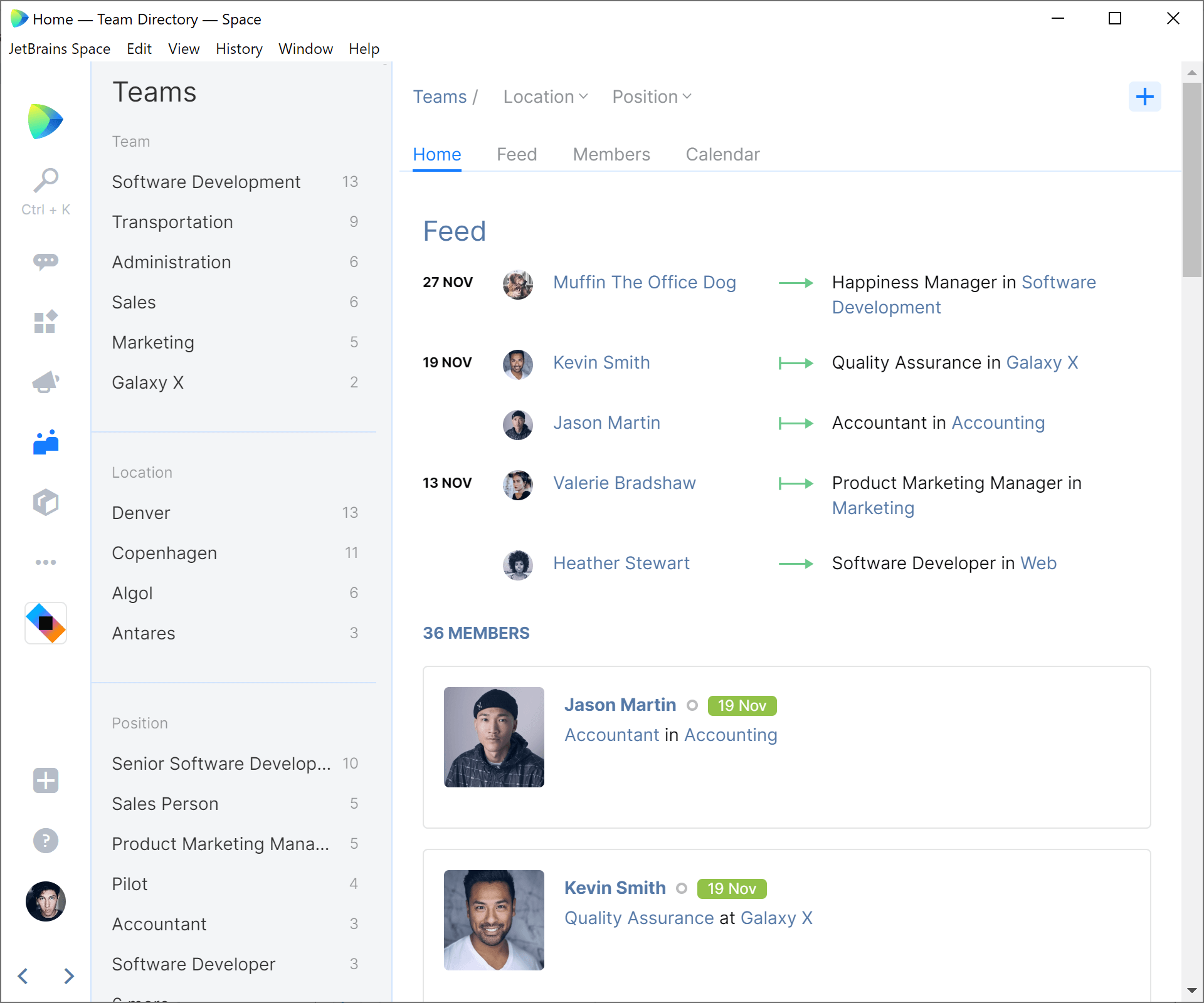
Within a team, meetings, calendars, vacations, blog posts, projects, and more are grouped together. We can see a feed of who’s joining or changing roles, and check the availability of the entire team without having to open calendars separately.
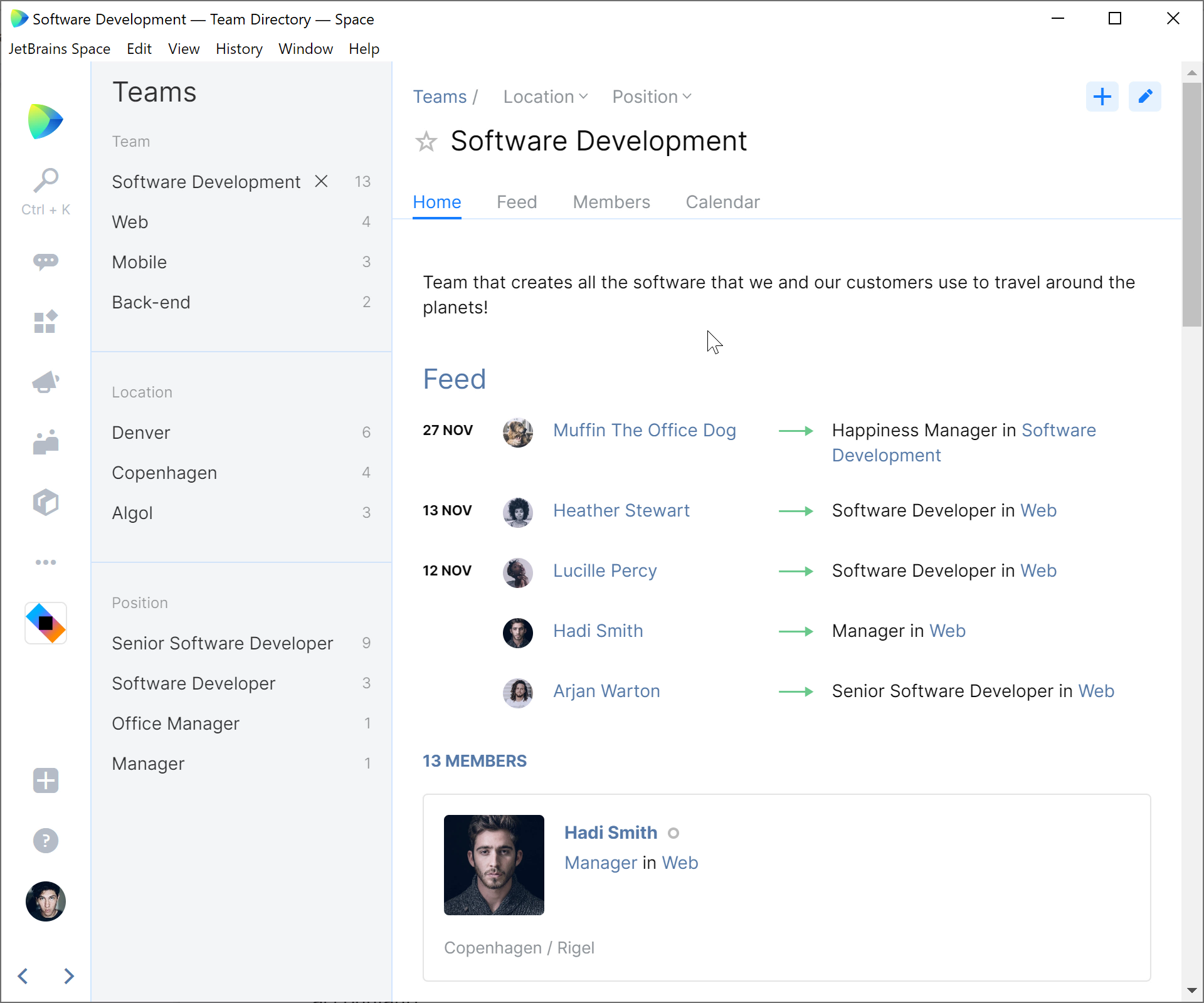
Tip: Use Go to Anything (Ctrl+K / Cmd+K) to quickly search for anything in Space, including teams, roles, and people.
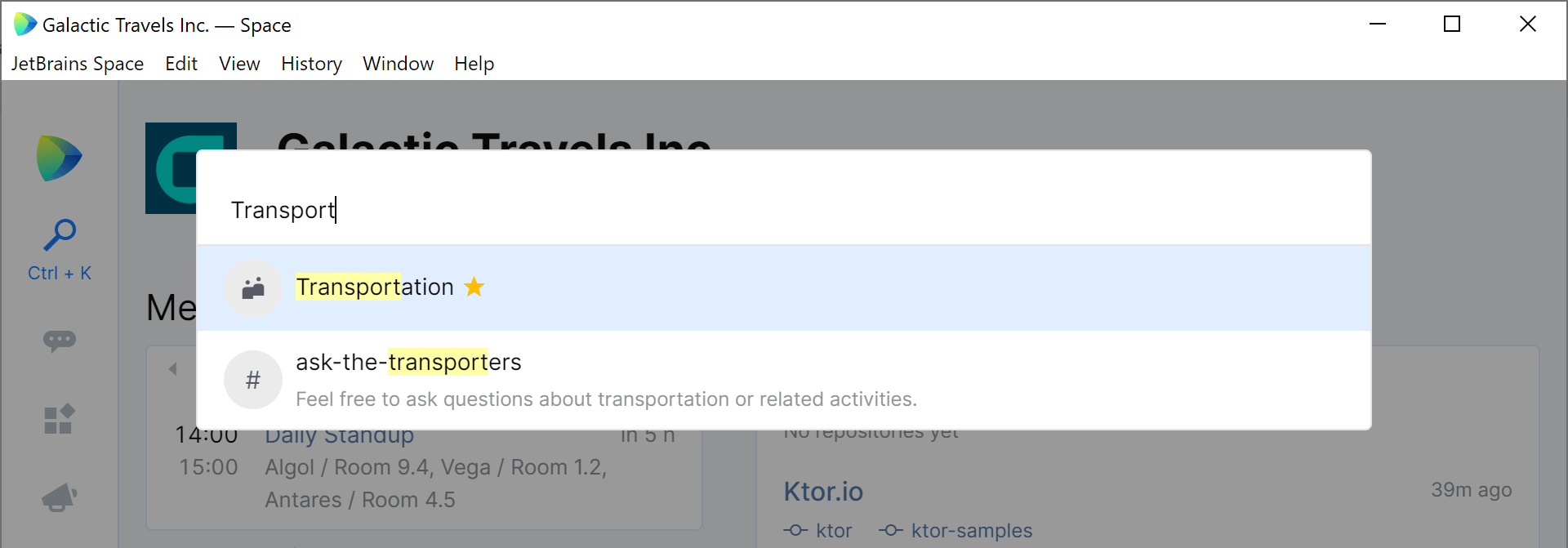
Teams for Individuals
Who can review my code? Who is around to help me with a given task? As a team member, it’s important to keep your calendar and absences up-to-date. By doing so, you help your colleagues know when you are working remotely, on a business trip, attending a conference, not feeling well enough to come to the office, or on vacation.
Adding those plans to your profile helps you make it clear to everyone who needs to know whether you are available or not. The team can make better decisions about whom to contact for a given topic, and not disturb you while away.
Teams for Communication
Having teams defined in Space helps make communication more efficient. Setting up meetings, communicating through chats, sharing knowledge – all this is centered around teams.
Chat channels for a team can be created by adding the entire team as a participant in one go – including future team members.
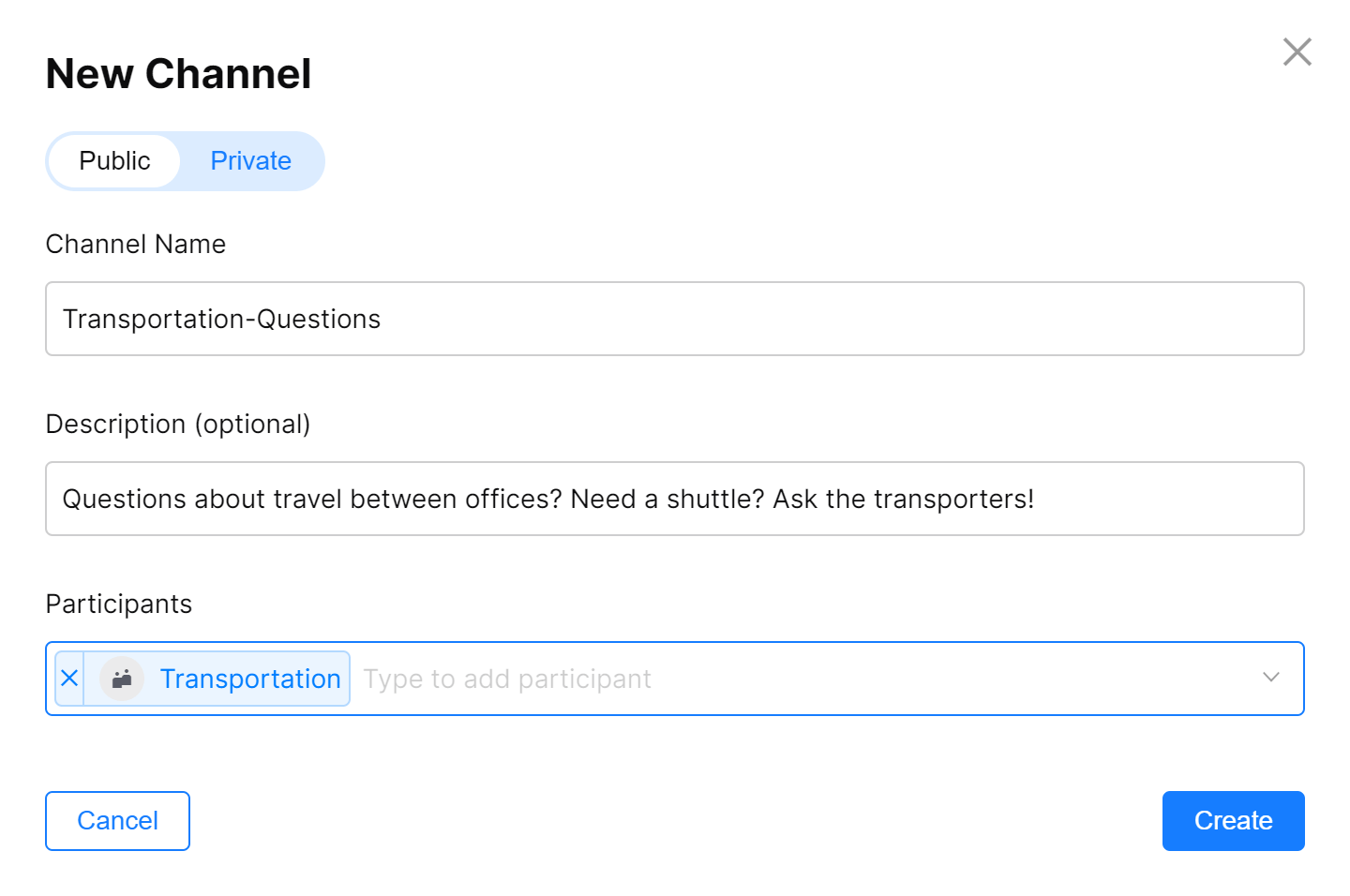
Important updates and news for the company can be shared in blog posts. Blog posts and events can be published company-wide (think general news, town halls, holiday parties, and internal events) or specific to certain teams or locations. The team structure helps get the right information to the right people.
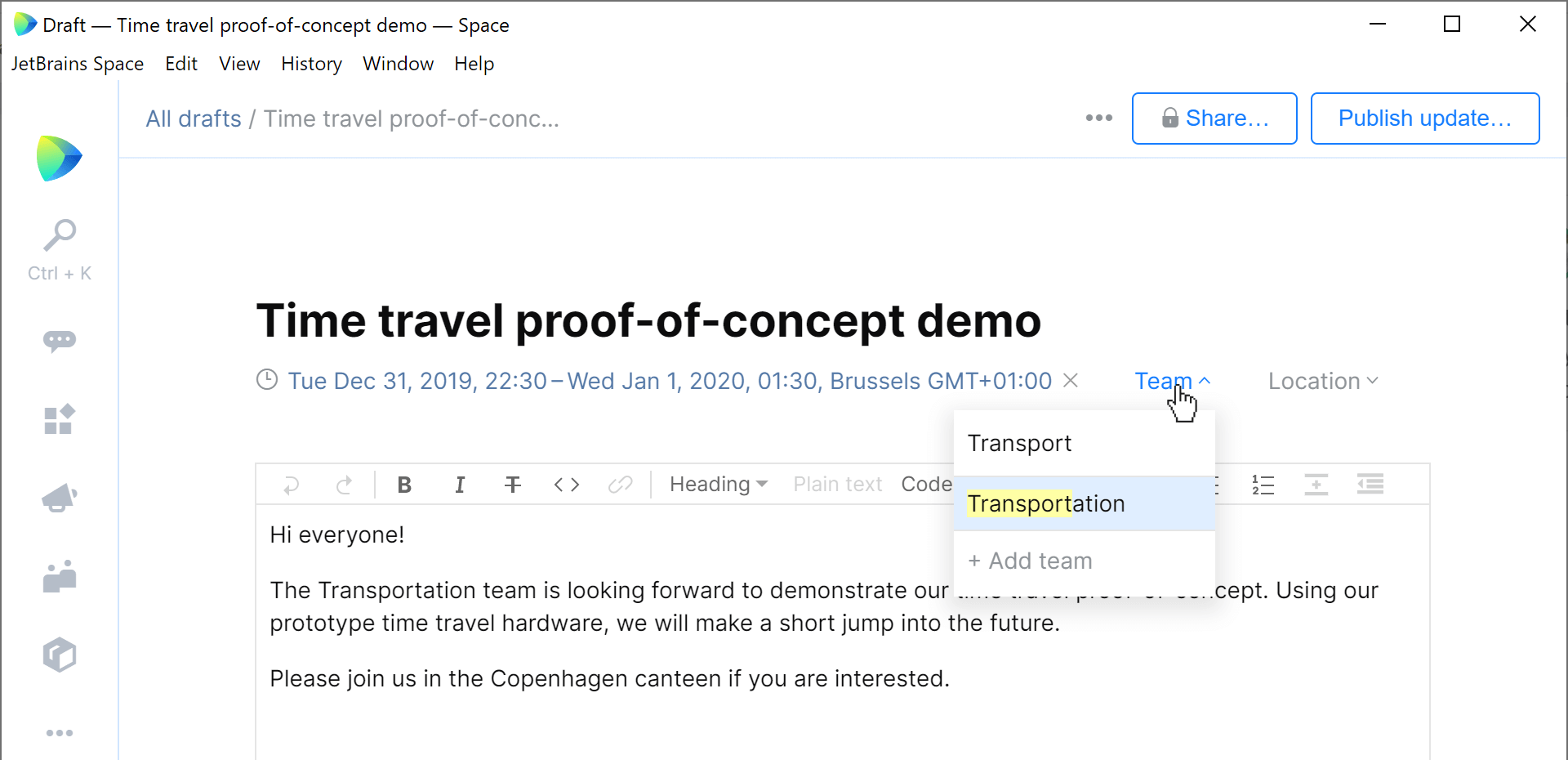
Teams for Security
When a member joins a team, Space provides them with permissions to access version control, code reviews, packages, issues, channels in chats, and knowledge base articles. Joining the team is all it takes to start working together – no more need to request access to 20+ distribution groups!
Within a team, there are 4 roles. Everyone in a team is a Team Member automatically, with the default permissions required to start working and communicating.
Team Leads have additional responsibilities and viewing rights within the team. They can view team members’ availability and approve absence requests from other team members. There can be one or more team leads in a team.
Next, the Team Manager has the same responsibilities and viewing rights as the team lead, except they are assigned as a direct supervisor in the organization. In the hierarchy, managers have people report to them, whereas team leads just have additional responsibilities.
Lastly, the Team Admin keeps the team records up-to-date. They receive and approve requests to join or leave the team, can edit team members’ profiles, add new members to the team, and create new sub-teams.
Default permissions for these roles can be configured from the Space administration dashboard.
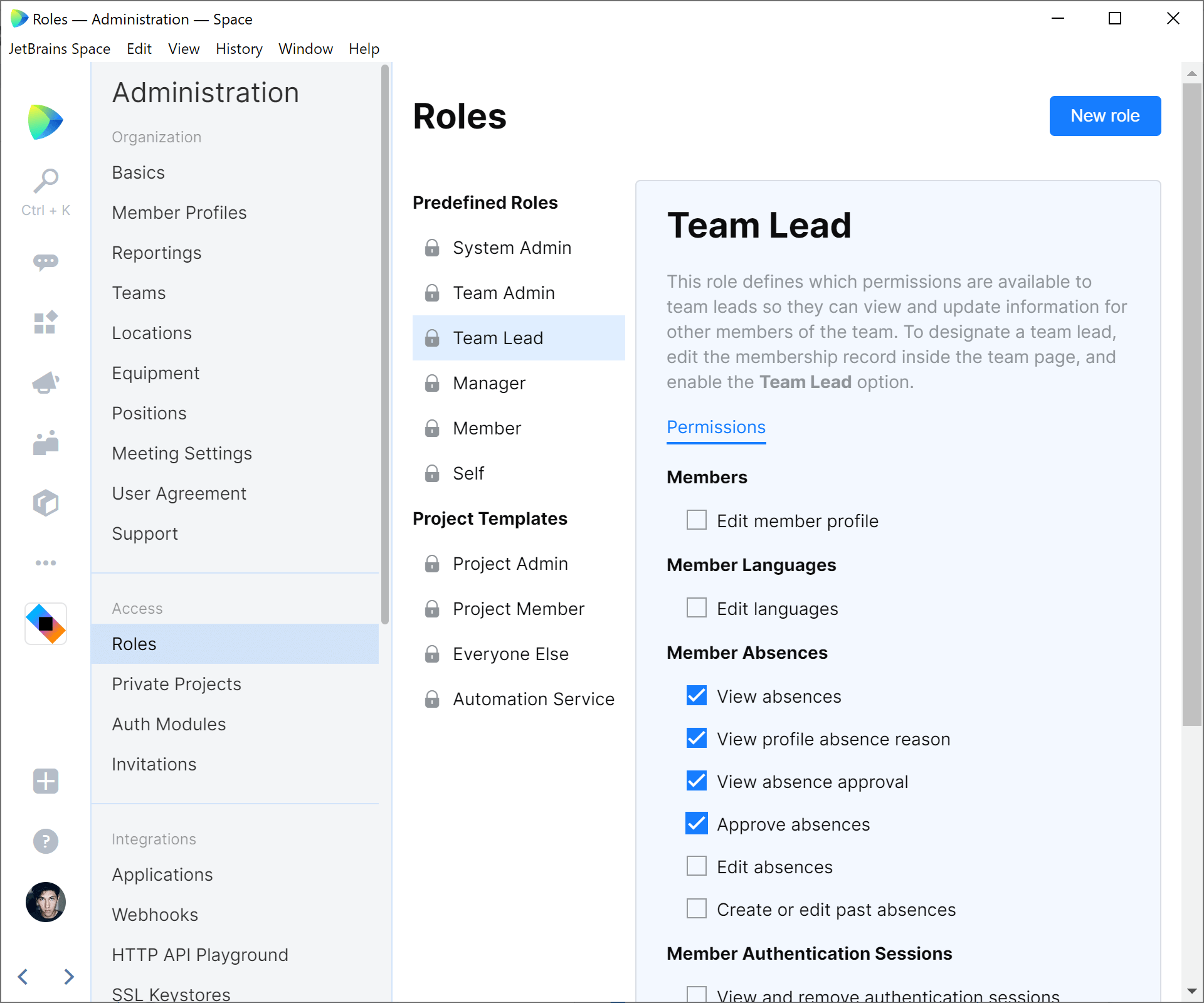
Teams for HR
While Team Leads, Managers, and Admins typically manage absences and member profiles, it can be convenient to have a dedicated team or specific people perform typical HR tasks.
When assigned the System Admin role, they can edit team records and member profiles, including scheduled absences and personal information, and add and remove members from teams.
What’s next?
As we’ve seen in this post, teams are a central concept in Space. Setting up the right team structure helps people communicate and work together more efficiently.
Existing functionality, such as chats, availability, source control, and meetings, is all centered around teams. Upcoming functionality such as the knowledge base will be too!
Sign up for your own Space and let us know how it goes!
Subscribe to Space Blog updates







